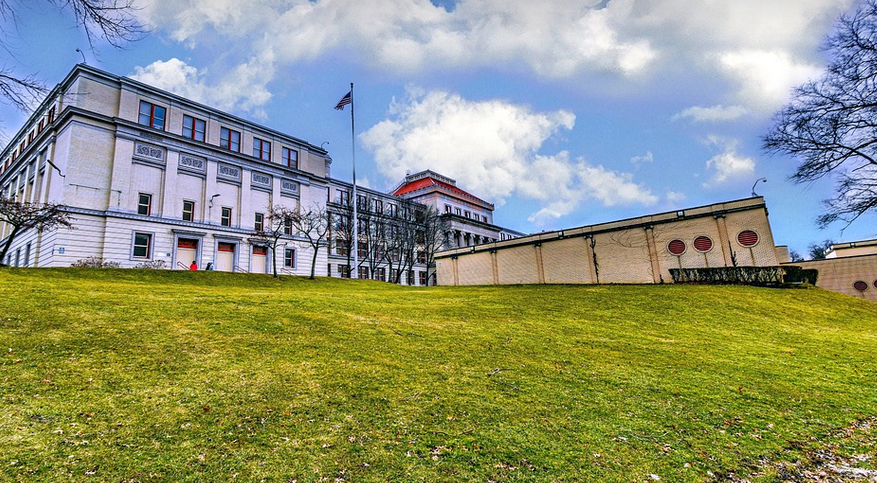
Understanding the Inner Workings of a Learning Hub
Higher education, with its sprawling campus landscapes and vibrant student life, often feels like an ecosystem in itself. Think libraries filled with knowledge, classrooms buzzing with discussion, and faculty members dedicated to shaping young minds. But beneath this outward spectacle lies a complex system of organization, one that drives everything from curriculum development to research grants and student support services.
Organizational theory, then, becomes a crucial lens through which we can understand the “who,” “what,” “why,” and “how” of higher education institutions. This theory delves into the intricate structures and dynamics that govern these institutions, examining their workforce, power dynamics, collaborative efforts, and ultimately, how they achieve their mission – to educate and prepare students for a dynamic world.
But what exactly does organizational theory encompass? Let’s dive deeper into its core principles.
Key Principles of Organizational Theory
Organizational theory is based on several fundamental concepts that form the building blocks of any successful learning environment.
**Structures and Hierarchy:** The first principle revolves around organizational structures, which dictate how power flows within an institution. Think of a pyramid with different levels – from top executives to department heads to individual faculty members. This hierarchy outlines responsibilities, decision-making processes, and the distribution of resources, ensuring that everyone is working towards a common goal.
**Culture:** The culture of an organization shapes behavior and influences how individuals interact. It reflects shared values, beliefs, norms, and expectations, acting as the invisible glue that holds everything together. A positive culture fosters collaboration, innovation, and support for students, faculty, and staff alike.
**Communication:** Open and effective communication plays a vital role in any organization’s success. Think of it as the lifeblood that flows between departments and individuals. It allows for information sharing, problem-solving, and quick feedback, essential for maintaining momentum and tackling challenges efficiently.
**Leadership:** The heart of an organizational structure lies in its leaders – those who set the direction, motivate others, and guide them towards success. Effective leadership fosters a positive work environment, builds trust, and promotes collective ownership over goals.
Applying Organizational Theory to Higher Ed
Now that we’ve explored some foundational principles, let’s see how these concepts play out in the higher education realm.
**Student-centered Approach:** In many traditional universities, organizational theory emphasizes a student-centered approach. This means putting students at the forefront of all decision-making processes, ensuring their needs and aspirations are met through personalized learning experiences, supportive services, and relevant curriculum that prepares them for future career paths.
**Faculty Collaboration:** The academic department plays a crucial role in higher education’s organizational structure. Faculty members often work within interdisciplinary teams to address complex issues like research projects, student engagement, and curriculum development. A collaborative environment fosters innovation and ensures the best possible learning experience for students.
**Resource Allocation:** The efficient allocation of resources is critical for any organization to thrive. This includes financial planning, technological infrastructure, faculty support systems, and even social services that help students navigate daily challenges.
Challenges in Higher Education
Despite its successes, higher education continues to face a multitude of challenges that impact its organizational effectiveness.
**Financial Constraints:** Funding issues often hinder universities’ ability to expand programs, attract top talent, and maintain their commitment to research. The pressure to stay financially afloat while providing resources for students and faculty can be immense.
**Student Mental Health Crisis:** A growing awareness of student mental health challenges calls for a deeper understanding of how organizational structures can support well-being initiatives. Building more robust mental health services, integrating wellness programs, and creating supportive environments are essential to foster a healthy college experience.
< p>**Diversity & Inclusion:** Promoting diversity and inclusion in higher education is crucial for fostering a vibrant learning community that reflects the diverse world we live in. Organizations must prioritize fostering inclusive climates where everyone feels valued, respected, and empowered.
The Future of Organizational Theory in Higher Education
As higher education continues to evolve, so too will the principles of organizational theory.
The future holds exciting possibilities for applying these theories to address new challenges and unlock even greater potential in our institutions.
**Technological Advancements:** The rise of online learning platforms and innovative technologies like AI are transforming how knowledge is shared and consumed. Organizations must adapt their structures, processes, and communication strategies to harness the benefits of technological advancements while addressing digital equity concerns.
**Sustainability & Social Responsibility:** A growing focus on sustainability and social responsibility compels institutions to adopt a more holistic approach to organizational theory. This involves integrating ethical considerations into decision-making processes, promoting sustainable practices, and contributing to the greater good.
**Focus on Student Success:** There’s a renewed emphasis on student success as core values in higher education, leading to a shift in organizational culture towards supporting students throughout their academic journey.
As these trends shape the future of higher education, understanding and leveraging organizational theory will be increasingly crucial for institutions seeking to create positive change and prepare students for an ever-evolving world.


